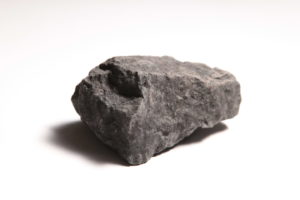
A new plan to mine magnetite iron ore for steelmaking will support longterm sustainability and build upon our GREENSTEEL practices.
Steel is essential to modern life but has an image problem. Its manufacturing contributes to 7-9% of carbon emissions. And by 2050, demand for this foundation material is expected to double the level of 2012, further exacerbating this problem.
The need to step up to this challenge, to provide lower-carbon steel at increased volumes is at the heart of our ambitious target to become carbon neutral by 2030.
It’s what is driving the work of our people, including our businesses in South Australia, as they strive to leverage new technology and new processes to reduce carbon emission, mitigate the environmental impact but also support thriving industries, communities and economies.
“We accept and acknowledge that we’re part of an industry that significantly contributes to global warming,” says Theuns Victor, Executive General Manager of the Whyalla Transformation program. “It is our responsibility to address this in the way we invest in our plant and equipment for the future.”
And it involves looking at every aspect of the steel production process.
Iron ore is a necessary building block in steelmaking, yet South Australia is abundant in a particular form of iron ore, called magnetite.
SIMEC Mining General Manager of technical and innovation Gavin Hobart, explains that advances in technology can convert magnetite into the highest premium iron concentrate traded in the market, called direct-reduction concentrate.

“This grade of iron ore allows alternate iron and steelmaking technologies to be considered with lower energy demands,” he says. “It allows lower-carbon steel technologies to be considered … that’s the vision we ultimately would like to drive to.”
The quality of steel, its strength and durability, are also a result of the energy invested into its reduction. Iron ore needs to be refined – which requires intense heat. Pig iron must then be balanced with carbon, which requires further intense heat. Traditionally this has come exclusively from fossil fuels, however in a carbon neutral future these must be complemented with alternative energy sources.
Work is soon to start on SIMEC Energy Australia’s Cultana Solar Farm – that largest single-phase build in Australia at this point in time – outside of Whyalla. The solar farm will produce 280 megawatts at full capacity and feed power to the upgraded steelworks as part of the Whyalla Transformation Plan, further reducing the carbon emissions and building upon GFG Alliance’s respected GREENSTEEL approach.
“Those are processes we’re currently looking at and developing,” says Victor. “The target is to be the first carbon-neutral steel producer in the world by 2030. It’s a very ambitious target, but GFG is not making any excuses for being bold and ambitious. This is how you change the world.”
The original version appeared in the South Australian Chamber of Mines and Energy Resourceful publication.
